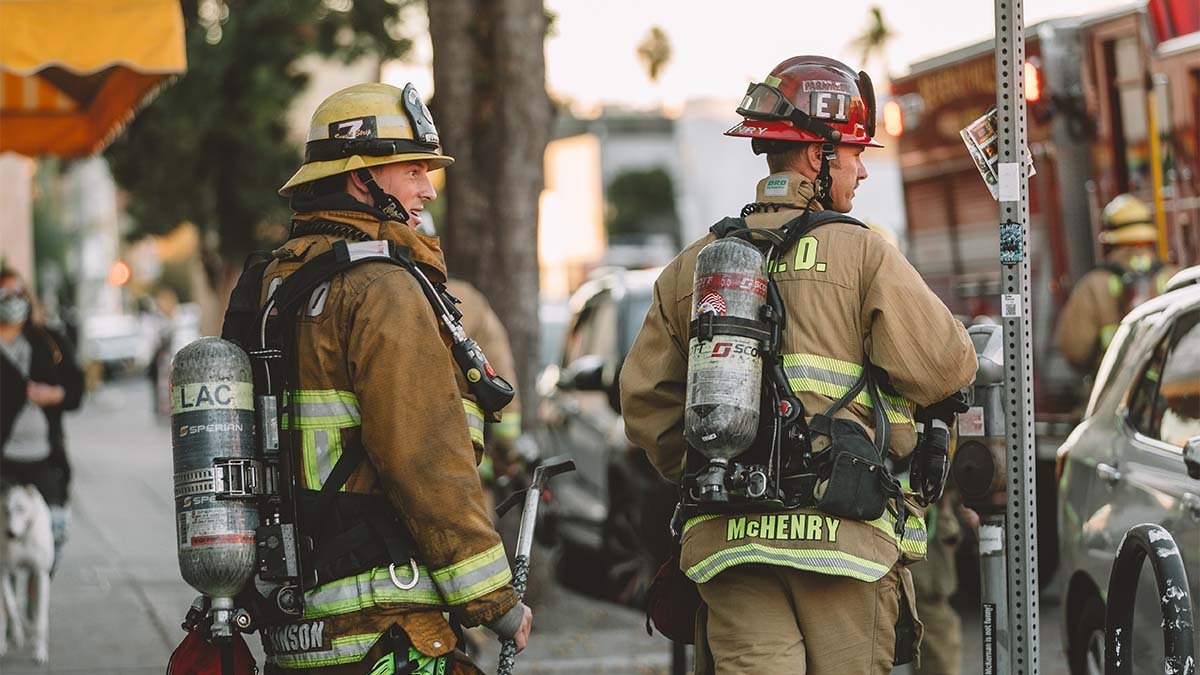Firefighters have always faced an inherent risk in their line of duty. Rushing into burning buildings, battling towering infernos, and navigating smoke-filled environments are just a few challenges they confront daily. While their bravery and dedication are undeniable, the dangers they face remain ever-present.
However, the landscape of firefighter safety is undergoing a transformative shift. Technological advancements are rapidly evolving, offering groundbreaking tools and solutions that promise to significantly enhance firemen’s protection and operational efficiency.
In this article, we’ll explore the exciting world of these emerging technologies and their potential to revolutionize firefighters’ approach in dangerous situations.
Technological Advances in Firefighting
Within the domain of firefighting, technological advances are catalyzing a transformative shift. These advancements enhance fire personnel safety, providing unprecedented tools. They mark a pivotal leap in firefighting practices, navigating complex environments.
Drones and Aerial Firefighting
Drones have emerged as indispensable allies in firefighting, ushering in a new era of aerial firefighting capabilities. Drones, armed with thermal cameras and real-time data, offer fire personnel an aerial perspective on wildfires, facilitating rapid and informed decisions.
In 2022, during the Nelson Creek Fire in Texas, a quadcopter drone with RGB sensors was deployed, reported Spectrum News 1. The unique fire, engulfing a vast timber plantation, presented challenges due to downed trees retaining heat. The drone’s GIS information was crucial in identifying numerous hotspots across the fiery landscape.
This case highlights drones’ vital role in improving firefighting efficiency and safety, especially in handling complex and hazardous environments.
Artificial Intelligence in Fire Prediction and Control
The fight against wildfires is becoming increasingly sophisticated with the advent of artificial intelligence (AI). AI algorithms use extensive datasets, including historical fire data, weather patterns, and environmental factors, to predict future fires’ likelihood, location, and intensity. This data-driven approach empowers firemen with valuable information.
AI is pivotal in proactive resource allocation, identifying high-risk areas, and ensuring timely deployment of personnel and equipment. It optimizes response strategies by predicting fire spread and aiding targeted suppression. Real-time AI analysis enhances early warnings, accelerating response times and potentially saving lives and property.
Washington state firefighters utilize AI-assisted cameras for early wildfire detection, as reported by Apple Valley News Now. The Washington Department of Natural Resources collaborates with T-Mobile and Pano AI to deploy 21 high-definition, 360-degree camera systems. These cameras leverage satellites, data feeds, and artificial intelligence to swiftly alert emergency responders at the first hint of smoke.
The initiative aims to enhance fire detection capabilities and facilitate prompt intervention, preventing wildfires from escalating.
Virtual Reality (VR) Training for Firefighters
Virtual reality (VR) technology is emerging as a powerful tool to address these limitations and revolutionize firefighter training. VR simulations provide them with a safe, realistic, and cost-effective training environment. Simulations replicate real fire scenarios, immersing them in authentic sights, sounds, and sensations to experience controlled stress environments effectively.
The versatility of VR allows for diverse training scenarios, from high-rise fires to confined space rescues, ensuring preparedness for various situations. Besides, personalized VR training caters to individual needs, enhancing targeted skill improvement and readiness for specific roles.
IoT Sensors for Fire Detection
IoT sensors transform fire detection by establishing an interconnected network monitoring critical environmental factors. These sensors, equipped to detect smoke particles through photoelectric sensors, offer heightened sensitivity for early alerts. Thermal sensors identify rapid temperature increases, providing early warnings of potential fire hazards.
Also, specialized sensors identify odorless carbon monoxide, a combustion byproduct, alerting firefighters and occupants to potential life-threatening dangers preemptively.
Robotics for Hazardous Environments
In the pursuit of advancing fire personnel safety, robotics has emerged as a pivotal ally in navigating hazardous environments. Advanced robots, with specialized sensors and mobility, navigate difficult situations, assess risks, and gather crucial real-time data for informed decision-making. Robotic assistants excel in high-risk scenarios like chemical spills or structurally compromised buildings, mitigating dangers associated with human intervention.
In the trajectory of fire personnel safety, robotic counterparts emerge as resilient partners, mitigating risks and enhancing emergency response effectiveness. They confront unpredictable and hazardous environments with precision.
Technology’s Contribution to Research and Innovation
Technology plays a crucial role in expediting research endeavors within the firefighting domain. From advanced simulations to real-time data analysis, technological tools facilitate a deeper understanding of fire behavior, hazards, and the effectiveness of various firefighting methods.
One notable application of technology in firefighting research is the formulation of fluorine-free foam. Technology enables the exploration of alternative chemical compositions and the development of firefighting foams effective in suppressing fires and mitigating environmental and health risks.
Fluorine-free foam offers a promising solution compared to traditional Aqueous Film-Forming Foam (AFFF). It addresses concerns associated with per- and polyfluoroalkyl substances (PFAS) linked to health issues and environmental contamination. Technological advancements have played a crucial role in identifying, testing, and refining these alternative formulations, ushering in a safer era for firefighting practices.
The transition to fluorine-free foam is further underscored by the AFFF lawsuit, which has brought attention to the health implications of traditional firefighting foams. The legal proceedings have prompted industries to reassess their practices and explore safer alternatives. The AFFF lawsuit settlement amounts indicate the acknowledgment of the challenges posed by traditional foams and the commitment to addressing them.
TorHoerman Law suggests that AFFF lawsuit settlement amounts could vary from $40,000 to $300,000 or more, depending on case strength and individual factors.
The Intersection of Technology and Firefighter Safety
As the first line of defense, firefighters courageously confront flames and hazards, safeguarding lives and property in the face of disaster. Yet, their safety remains paramount. It is where technology steps in, playing a crucial role in enhancing their safety and effectiveness.
While technology plays a vital role in enhancing firemen’s safety, it’s important to recognize that it’s just one piece of the puzzle. A holistic approach to security involves addressing key factors. Prioritizing mental health and well-being, offering essential support, and fostering a culture of resilience are crucial.
Equipping fire personnel with evolving skills through continuous training and education is essential. For instance, NFPA Research notes that ergonomic training reduces musculoskeletal injuries in firefighting, focusing on tasks like bending and lifting. Improved aerobic fitness lowers sprain and strain risks in these brave people. It emphasizes the necessity for structured fitness programs in injury prevention.
The findings highlight the importance of holistic training approaches for enhanced fire personnel well-being.
Industry Responses and Challenges
Industry responses to the surge in technological innovations within firefighting have been both promising and challenging. Forward-thinking companies actively invest in research and development, collaborating with emergency response agencies to integrate these technologies seamlessly into their operations.
However, challenges arise regarding standardization, interoperability, and the financial implications of adopting state-of-the-art equipment.
Industry stakeholders recognize the need for collaborative efforts to collectively establish industry standards and address these challenges.
Embracing a Safer Tomorrow
The amalgamation of cutting-edge technologies with the noble pursuit of safeguarding lives has propelled firefighter safety into a new era. From AI-driven predictions to VR-enhanced training, each innovation is a crucial piece in the intricate puzzle of emergency response.
Collaboratively charting the course forward cultivates a future where firefighters wield cutting-edge technology, facing adversity with unparalleled precision and resilience. Adopting innovations isn’t a choice; it’s a collective responsibility to fortify community guardians and ensure a safer future for all.




